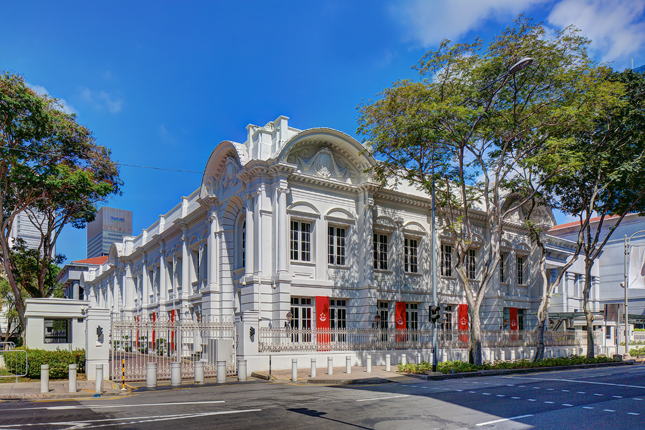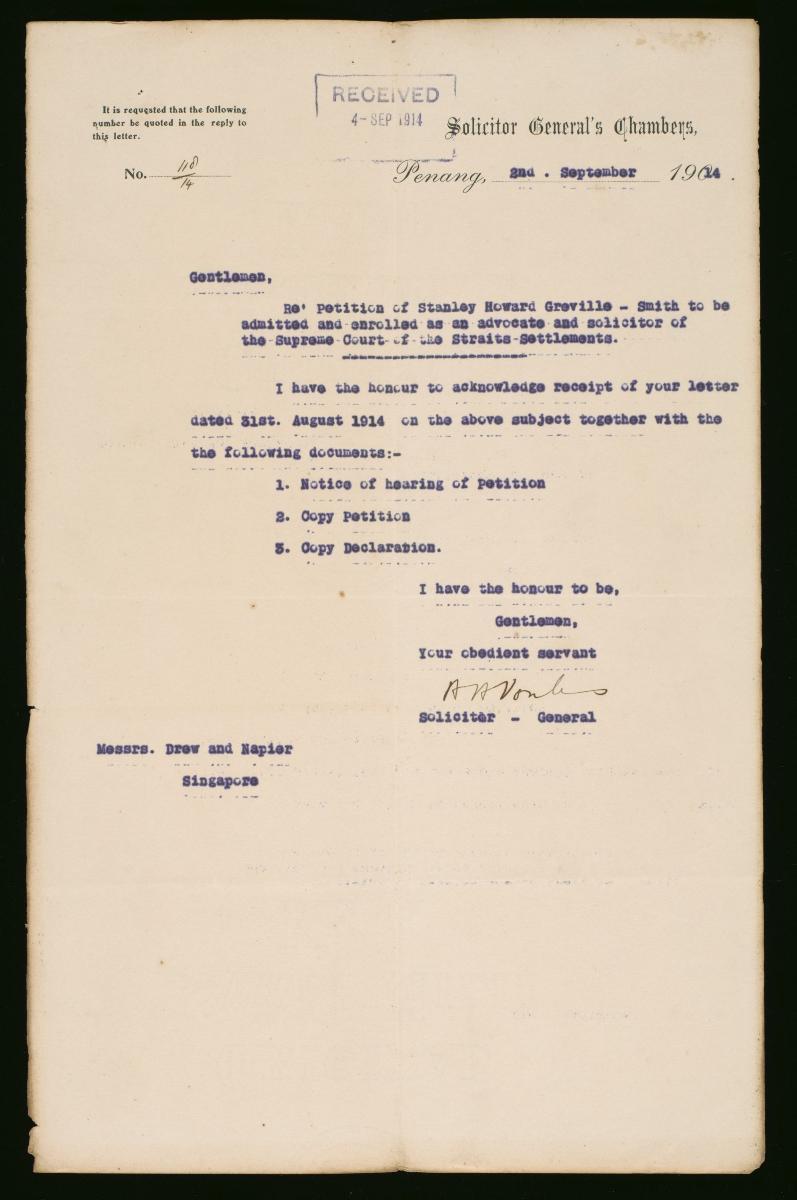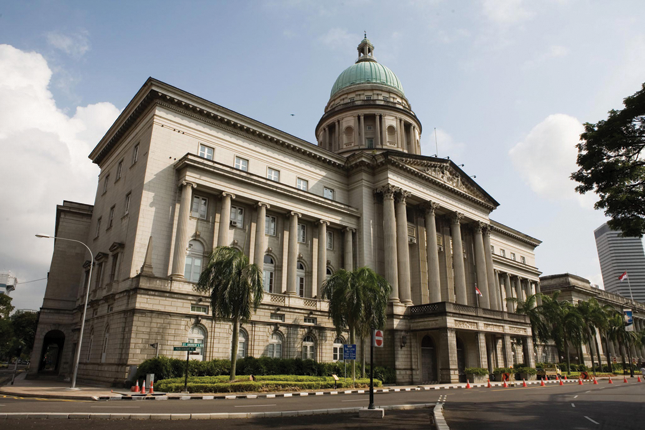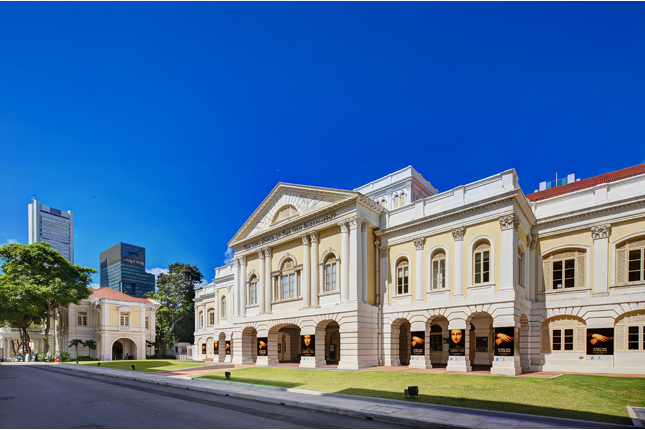Tucked away in a corner near the Padang is a beautiful structure that once housed the Attorney-General’s Chambers. Even though it is usually overshadowed by more prominent neighbours, including the Former Parliament House, Former Empress Place Building, Victoria Theatre and Victoria Concert Hall, and Former Supreme Court, the two-storey building serves an important function today, as it did during the colonial period.
Origins
Based on current archival research, it is not certain when the original building was constructed. The first recorded structure on the site was an annex of Maxwell’s House (the present-day Former Parliament House. The annex, opened in 1839, was initially occupied by the court. However, the building was soon deemed unsuitable for the court’s use, due to its close proximity to the noisy shipbuilding activities at the adjacent Hallpike Boatyard. The annex was then used temporarily as a post office before it was abandoned.
A second structure on the same location dates from the 1880s, when the annex was either demolished or enlarged and incorporated into a larger two-storey structure. This second building had large windows and a jack roof, and it housed the Government Printing Office. In 1906, it underwent a major construction and renovation project – the resulting façade remains until this day. The most visible façade which faces High Street is actually the building’s side; the building’s true front is long, but is virtually hidden behind the foliage of trees and blocked by the nearby Former Parliament House.
From the late 1960s until 1976, the building was occupied by the Public Works Department, the department responsible for the construction and upkeep of public infrastructure in Singapore. In 1976, the building was renovated to accommodate the chambers of the Attorney-General, the chief legal advisor to the Singapore Government and its public prosecutor.
Attorney-General in Singapore
The office of the Attorney-General in Singapore was formed in 1867, the same year the Straits Settlements became a Crown Colony in the British Empire. Sir Thomas Braddell, who resided in Singapore, was Singapore’s first Attorney-General; his Solicitor-General, Daniel Logan, was based in Penang. Prior to this, the role of legal advisor to the government was exercised by the Recorder of the Prince of Wales Island (Penang), Malacca, and Singapore (1826–1855); the Recorder of Singapore (1855–1864); and the Crown Counsel of Singapore (1864–1867). The Attorney-General’s Chambers was housed on the ground floor of the Former Empress Place Building before it was shifted to the Former Attorney-General’s Chambers.
Architecture
In an attempt to make the structure conform to the architectural styles of its neighbours, a rusticated base was added to the Former Attorney-General’s Chambers. Certain architectural features were also borrowed from the nearby Victoria Theatre and Victoria Concert Hall, which were largely influenced by the Neoclassical style. The building features curved pediments on the corner extensions, which are adorned with stucco cartouches (oval shield motifs) and festoons (mouldings of leaves and ribbons).
Former Attorney General’s Chambers Today
The building was restored in 1991 after the Attorney-General’s Chambers shifted to its new premises. Today, the building forms part of the Parliament House complex.
Our National Monuments
Our National Monuments are an integral part of Singapore’s built heritage, which the National Heritage Board (NHB) preserves and promotes for posterity. They are monuments and sites that are accorded the highest level of protection in Singapore.

















